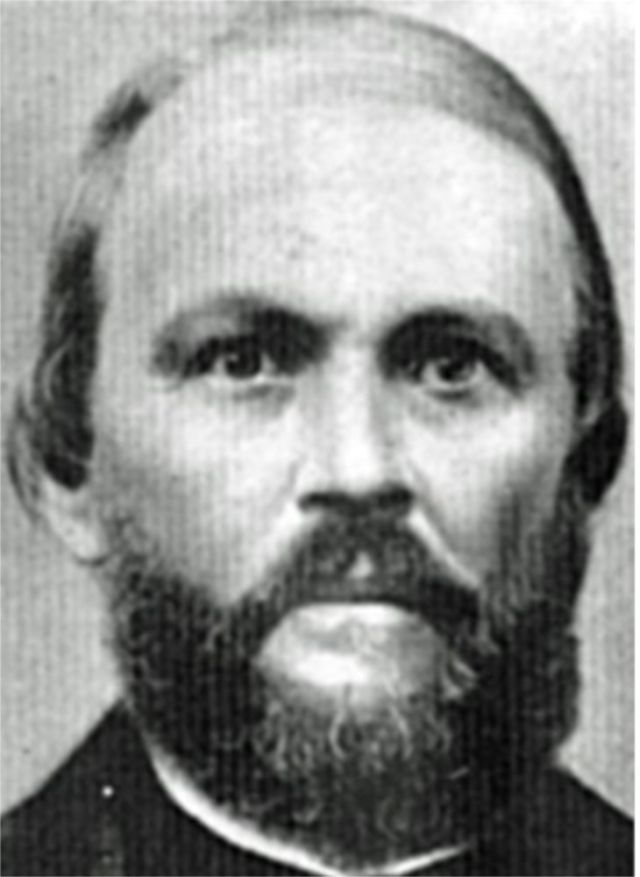COPYRIGHT 2026 SCRIPTURE CENTRAL FOUNDATION: A NON-PROFIT ORGANIZATION. ALL RIGHTS RESERVED. REGISTERED 501(C)(3). EIN: 39-2827600
Aaron Johnson
(1806-1877)


D&C 124:132
By Susan Easton Black
On April 5, 1836, thirty-year-old Aaron accepted the message of the Restoration as preached by Elder Daniel Spencer and entered baptismal waters. In the spring of 1837, he and his family gathered to Kirtland to be with the Saints of God. Aaron took the opportunity to visit the Prophet Joseph Smith in his home at Kirtland. As they were conversing, Aaron placed $4,500 on the Prophet’s desk and said, “There is all the wealth I possess, what shall be done with it?” Joseph walked him over to the window and, pointing to a parcel of land, said, “Take your money and buy that piece of land, build you a house and it shall be yours for an inheritance, and may the Lord bless you.”1
Aaron purchased an eighty-acre plot in Kirtland and prospered. He was not only a successful farmer, but a blacksmith and gunsmith until the mob element in town forced him to flee. With the Kirtland poor, he and his family journeyed to Far West, Missouri. They did not stay in the Latter-day Saint community long for religious persecution quickly turned to warfare. Aaron was one of “the defenders, and when the town fell, he was also among the prisoners of war.”2 When released from prison, he joined the Saints leaving Missouri and crossing the Mississippi River to Illinois.
In 1839 Aaron and his family moved to Commerce, Illinois, settling a few blocks from the Joseph Smith homestead. His first year in Commerce, Aaron suffered greatly from chills and fever inherent to the swamplands of Commerce. For about nine months, he “did not miss the shakes of this disease for a single day.”3 When his health problems subsided, he was called to give much service in what was now being called the City of Nauvoo. He became a prominent civic leader serving as a city councilman, a commissioned officer in the Nauvoo Legion, a high councilman in the Nauvoo Stake (D&C 124:131-132), and a municipal court judge.
Aaron is remembered for being with Joseph and Hyrum Smith in Carthage in late June of 1844. He was “one of the bondsman for the Prophet Joseph Smith and his brother Hyrum when they were placed in Carthage Jail.”4 When the Smith brothers were killed by the mob gathered outside of the jail, Aaron could not refrain from tears.
He and his family joined the Latter-day Saint exodus from Nauvoo, leaving behind “real estate which cost him over $4,000, but for which he only received $150.”5 In the Territory of Iowa, Aaron continued to be a leader in the Church. He served as a high councilman and bishop before crossing the plains to the Salt Lake Valley in 1850.
Aaron was asked by Brigham Young to “choose a number of families, go into Utah Valley, and make a settlement, establish homes, and be united.”6 He and his family joined the Saints heading to Utah Valley. Gazing over the valley, he concluded that the most beautiful area was near Hobble Creek: “We gazed with admiration upon the vast meadows spread before us, and the bunch grass along the foothills . . . Never before had I be held a grander prospect.”7 The Church record states, “Springville, Utah Co., was settled by Aaron Johnson and others.”8
The labors of Aaron Johnson for the betterment of Springville are near legendary. He helped dig ditches, construct dams, and build roads. He designated the city square and helped construct an academy with a large stage for theatrical productions. In addition, he built a thirty-room home known as Springville’s first hotel. He served as the first bishop in the settlement, a patriarch, and a probate judge. He was elected to represent the community in the Utah House of Representatives. As a legislator, Aaron served on key committees—the Elections Committee and the Judiciary Committee. As a brigadier general in the Utah militia, he helped defend Latter-day Saint settlements in the Walker, Tintic, and Blackhawk Indian Wars.
Beginning in January 1871, “Bp. A. J. left home for parts unknown. He returned again shortly but kept out of public notice.”9 His retreat from “public notice” had much to do with the law of plural marriage and growing antagonism against the practice.
Aaron died of “nervous exhaustion from cold” on May 10, 1877 in Springville at age seventy. The Deseret News reported his final words: “I feel that my work is done, and if it be the will of the Lord that I should die I am fully resigned and willing to go.”10
1. Luke William Gallop, “Biographical Sketch of Aaron Johnson’s Life,” in Alan P. Johnson, Aaron Johnson, Faithful Steward (Salt Lake City: Publishers Press, 1991), p. 5.
2. “Aaron Johnson, First Judge of Utah County,” Tullidge’s Quarterly Magazine 3 (October 1883), p. 410.
3. Gallop, “Biographical Sketch of Aaron Johnson’s Life,” in Johnson, Aaron Johnson, Faithful Steward, p. 30.
4. Mozelle Braithwaite and Wayne Braithwaite, “History of Annie Rachel Johnson,” in Johnson, Aaron Johnson, Faithful Steward, p. 68.
5. “Aaron Johnson, First Judge of Utah County,” Tullidge’s Quarterly Magazine 3 (October 1883), p. 413.
6. Gallop, “Biographical Sketch of Aaron Johnson’s Life,” in Johnson, Aaron Johnson, Faithful Steward, p. 190.
7. Ibid.
8. Journal History of the Church, October 1850.
9. Gallop, “Biographical Sketch of Aaron Johnson’s Life,” in Johnson, Aaron Johnson, Faithful Steward, p. 602.
10. Deseret News 26:234, in Johnson, Aaron Johnson, Faithful Steward, pp. 607-608.
Additional Resources
- Biography of Aaron Johnson (josephsmithpapers.org)